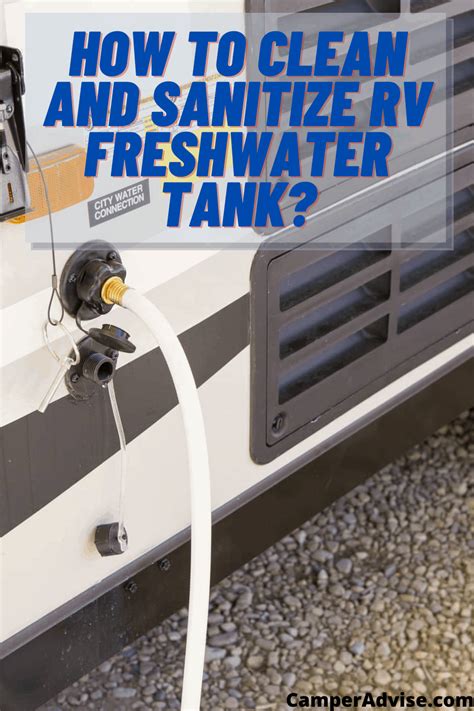Clean RV Water Tank: Enjoy Delicious, Safe Water
Your RV is your home away from home, and access to clean, safe water is crucial for a comfortable and enjoyable trip. A dirty water tank, however, can quickly turn your adventure into a health hazard. This comprehensive guide will walk you through the process of cleaning your RV's fresh water tank, ensuring you always have delicious and safe water on tap.
Why Clean Your RV Water Tank?
Before diving into the cleaning process, let's understand why regular cleaning is essential. Over time, your RV's water tank can accumulate sediment, algae, bacteria, and other contaminants. This can lead to:
- Unpleasant taste and odor: Imagine drinking water that tastes musty or smells like mildew – not exactly the refreshing experience you're hoping for.
- Health risks: Bacteria and other pathogens lurking in your water tank can cause gastrointestinal illnesses, making your trip miserable.
- Damage to your RV system: Biofilm buildup can clog water lines and damage your water pump, leading to costly repairs.
- Compromised appliance function: Dirty water can damage your RV's water heater, ice maker, and other appliances that rely on clean water.
How Often Should You Clean Your RV Water Tank?
The frequency of cleaning depends on several factors, including how often you use your RV and the quality of the water sources you fill it from. As a general rule of thumb, it's recommended to clean your RV's fresh water tank:
- At least twice a year: This is a good baseline, especially if you store your RV for extended periods.
- After each trip: This is especially important if you've been using questionable water sources.
- Whenever you notice a change in taste or odor: This is a clear sign that your tank needs cleaning.
How to Clean Your RV Water Tank: A Step-by-Step Guide
Cleaning your RV water tank is a relatively straightforward process, but it requires attention to detail. Here's a comprehensive guide:
1. Empty the Tank: Completely drain your fresh water tank through the low-point drains. Ensure all the water is removed.
2. Flush the Tank: Connect a garden hose to your water tank's fill port and flush it with plenty of water. This helps remove loose sediment and debris.
3. Sanitize the Tank: This is the crucial step. You can use either a dedicated RV tank cleaner or a bleach solution.
- Using a Dedicated RV Tank Cleaner: Follow the instructions on the product label carefully. These cleaners are specifically formulated to remove biofilm and kill bacteria.
- Using Bleach: A common and effective method involves mixing a solution of one cup of unscented household bleach per 15 gallons of water. Add this solution to your tank, ensuring it covers all surfaces.
4. Let it Soak: Close the tank fill port and allow the cleaning solution to sit for several hours, or ideally, overnight. This allows the cleaning solution to effectively work.
5. Rinse Thoroughly: After the soaking period, flush the tank again with plenty of clean water to remove all traces of the cleaning solution.
6. Fill and Drain: Fill the tank completely and drain it once more. Repeat this process at least two to three times to ensure all residue is removed. You'll want to taste the water; if it has a slight bleach taste, repeat the rinse cycle until the taste is gone.
7. Refill and Enjoy: Once you are satisfied with the cleanliness, refill your tank with fresh water and enjoy clean, safe, and delicious water on your next adventure.
What if I Have a Persistent Odor?
If you've followed these steps and still have a persistent odor, it could be due to a more stubborn issue such as mold or mildew growth. In this case, you might need to use a stronger cleaner or consult an RV professional.
What is the best way to prevent my RV water tank from getting dirty?
Prevention is always better than cure! Here are some preventative measures you can take:
- Use a water filter: Installing a water filter at your RV's water inlet will help remove sediment and impurities before they even enter your tank.
- Add a water treatment tablet before every trip: These tablets help prevent bacteria and algae growth.
- Completely drain your tank after each use: This reduces the chance of bacterial growth and prevents stagnation.
How do I know if my water tank is clean enough?
While you can't visually inspect the inside of the tank, the absence of any unpleasant taste, smell, or cloudiness in the water indicates that the cleaning process was effective.
Following these steps will help ensure you always have access to clean, safe, and delicious water on your adventures. Happy travels!

